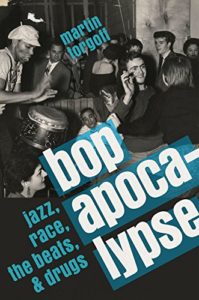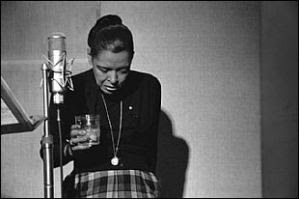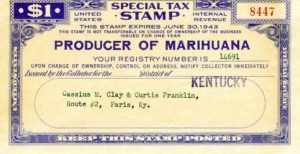A few pages into this book got us addicted. That’s a good thing. To fully understand national discussions on drugs—whether it’s the legalization of marijuana or the use of Naloxone for heroin overdoses—we must look at how the American drug culture was born: With herbal jazz cigarettes (think joints) at the Savoy Ballroom and the Beats high on Benzedrine in Times Square. In Bop Apocalypse: Jazz, Race, the Beats, and Drugs (Da Capo, $25.99), Martin Torgoff explores the early days of America’s drug use and marries it with our counter culture history taking us back to the beginning of the 20th century when modern drug law, policy, and culture were first established, and when musicians, writers and artists came together under the influence.
The narrative of Bop Apocalypse encompasses:
- the birth of jazz in New Orleans
- the Federal Bureau of Narcotics, Harry Anslinger and his “Marijuana and Musicians” file which included Duke Ellington, Dizzy Gillespie and others
- Louis Armstrong and Chicago in the ’20s
- “Reefer Madness” and the Marihuana Tax Act of ’37
- Kansas City and the birth of swing
- Bebop and the arrival of heroin to the streets of Harlem in the ’40s
- the conjoining of principal Beat Generation characters in New York—Jack Kerouac, Allen Ginsberg, Neal Cassady and William Burroughs; their journeys and the creation of the three jazz-imbued masterworks (On the Road, Howl and Naked Lunch)
- the birth, by 1960, of a new bohemian culture in cities and on college campuses across America

The last known photo of Billie Holiday, snapped during a Verve recording
The juxtaposition of genius and addiction is notable throughout. Billy Holiday’s heroin addiction is discussed candidly with revealing new details from bebop hooker Ruby Rosano who shot up with Holiday’s help in a basement apartment while Charlie Parker played a blues nearby. Other vignettes like the engagement of the Miles Davis Quintet at the Café Bohemia in ’56 introduced John Coltrane’s brilliance to an audience of adoring fans as he spiraled into addiction and Davis reemerged clean.
A book that lays bare the ways in which race, drugs, and music collided to create a culture of both creative ingenuity and, at times, self-destruction, Bop Apocalypse tracks the impact of music’s long love affair with illicit substances.
